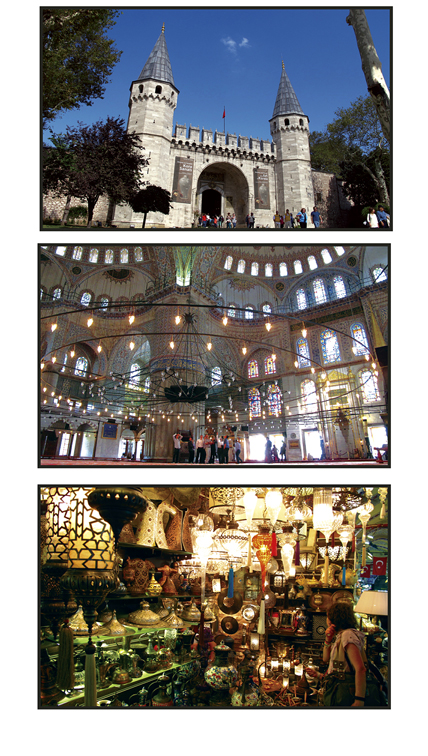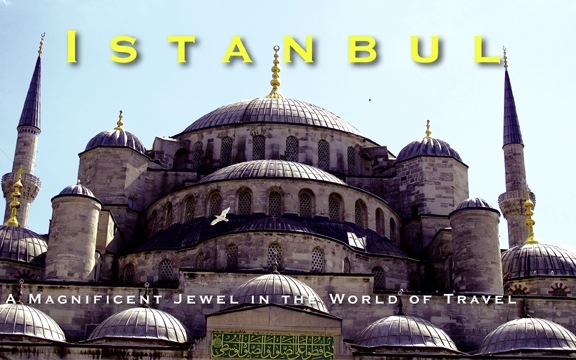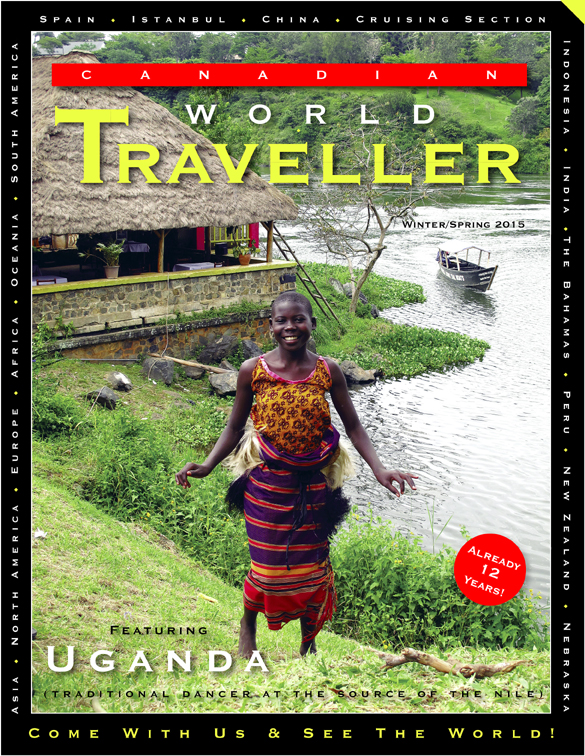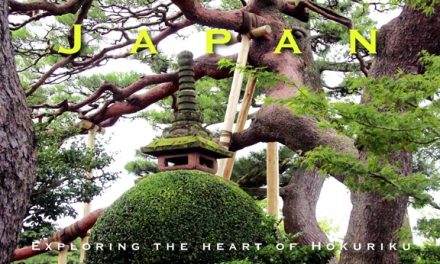Istanbul
A Magnificent Jewel in the World of Travel
by Habeeb Salloum

Istanbul, long a bridge between East and West, is a historic and thriving Turkish metropolis of spice markets, bazaars, mosques, mosaics, tasty kebabs and imperial grandeur. It is a city of untold attributes and one of the greatest urban centres on the globe. For travellers, there are only a few cities in the world that can offer more for visitors. From imperial palaces to spectacular bazaars, historic structures, its Imperial Cuisine and much more, it is a magnificent jewel in the world of travel.
Long coveted by powerful empires, Istanbul, built on seven hills, is the only city in the world that straddles two continents, Asia and Europe, giving it a vital strategic location. Spanned by a bridge, the city stretches along the two shores of the Bosphorus that links the Sea of Marmara to the Black Sea. Turkey’s largest urban centre with a population of approximately 12 million, Istanbul is full of history and culture and boasts a highly original personality, acquired from being a Byzantine, then Ottoman imperial capital for some 1,700 years.
Today, Istanbul, though no longer a world metropolis, is still one of the most vibrant and magical places in Europe and the Middle East. It is also at the heart of Turkey and its bustling commercial and economic capital. In addition, it is also the home of art and culture, and offers a rich tradition in ballet, opera, theatre, concerts, art exhibitions and festivals, and is, as well, a city dotted with unique museums. Yet, it has not become a static museum-city, but rather very much a living city, incorporating myth and magic.
Exploring the city, visitors will find at every turn Roman, Byzantine and Ottoman palaces, mosques, churches, monasteries, monuments, old markets and ruins. Istanbul’s centuries of empire have left an extraordinary legacy of structures from every period of its history.
However, with its subtle blend of eastern and western cultures, Istanbul is not a city living only on its historic glory. It is a vibrant, modern and future-oriented metropolis that blends the past with the present and the future like an intricately woven carpet.
Bazaars edge ultra-modern supermarkets and department stores; street vendors and old crumbling buildings, are overshadowed by spectacular skyscrapers; and horse-drawn carts are dwarfed by sumptuous limousines. Needle-like minarets reach the skyline wherever one looks and muezzins, at dawn, call the faithful to prayer, just as the last revellers stumble out of the city’s nightclubs. This coexistence of old and new gives the city life and colour and a multi-faceted outlook and flavour – a world of 21st century oriental splendour.
Istanbul’s unique geographical position, has given the city an unmistakably cosmopolitan atmosphere, incorporating charm and history. Even though its traffic jams and air pollution, as well as its modern high-rise buildings lack the grace and appeal of its celebrated landmarks, they are proof that the city remains the heart of the country and a thriving modern city in which ancient palaces and belly dancers have their place.
Stunning buildings from its past with their street scenes are everywhere. When visitors set foot outside almost any of the hotels in or near the old city called Sultanahmet, they walk into a world of the ancient past. Vendors pushing teetering handcarts through narrow streets, men puffing on water-pipes in outdoor cafes while they sip glasses of sweet tea are overshadowed by venerable structures displaying their majesty.
For travellers, especially tourists, the most visited of these structures are: Hagia Sophia (Aya Sofya), one of the greatest Byzantine buildings in the world and famous for its remarkable architecture and beautiful mosaics; the Sultan Ahmet Camii (Blue Mosque), noted for its tiers of magnificent domes and graceful minarets; the magnificent Topkapi Sarayi (Topkapi Palace), a sprawling collection of striking buildings arranged around a number of interconnecting courtyards; and the amazing Kapali Çarsi (Grand Bazaar), incorporating 4,000 small exotic shops.
The Aya Sofya, a historic landmark of Istanbul, which in 1934 was declared a museum, is one of the city’s most popular attractions. A massive domed structure with a vast interior and a huge soaring dome, it was built as a cathedral in the 6th century and remained the most important church in Christianity for over 900 years. After the Ottomans captured Constantinople in the 15th century it was converted it into a mosque. Minarets and fountains were added and it functioned as a mosque for the next 481 years. The interior is filled with stunning mosaics and the dome glows from the light of 30 million gold tiles – an unforgettable sight. Today it is a museum and a tourist mecca.
Still used for prayer by the faithful, the Blue Mosque, with its six graceful minarets piercing the city’s skyline, is one of the most impressive structures in Istanbul. Erected in 1609 as an Islamic rival to the Aya Sophia, it is one of the finest examples of Ottoman architecture. Its design of successively descending smaller domes, soaring columns and 260 stained glass windows, as well as the thousands of blue tiles covering the interior, give visitors a lasting impression of graceful accord and overall majesty.
The Topkapi Palace, built by Mehmet II, is magnificently located offering an uninterrupted view of the Bosphorous and the Golden Horn. The seat of the Ottoman Empire for four centuries, it served as royal residence, harem, state administration centre and military barracks. Exquisitely designed rooms, intricately detailed fountains, ornate gardens, and the splendid Treasury, housing one of the greatest collections of riches in the world make it a world-renowned historic storehouse.
For many travellers, equally important as the historic structures is the 500-year- old Grand Bazaar, the oldest and largest covered marketplace in the world. Located in the city centre and consisting of a vast network of 65 winding alleyways crammed with shops, storehouses, teahouses, hammams (Turkish baths), mosques and fountains, it is the place that attracts the most tourists in Istanbul. Here, one can find almost everything under the sun – from household items, oriental carpets and jewellery, to Turkish sweets, rich textiles, spices, clothing, exquisite ceramics and much, much more.
In this city of history, diversity works. The eternal contradictions between East and West and their legacy give Istanbul enticement, vibrancy and a world of colour and romance. This is reflected clearly in its food – a cuisine with a Byzantine and Ottoman regal past.
When, after a few days of touring the historic sites, visitors sit down to dine on a fine Turkish meal, it can be said that they have felt Istanbul and tasted a bit of the renowned Turkish Imperial cuisine in this jewel of tourist attractive cities.






